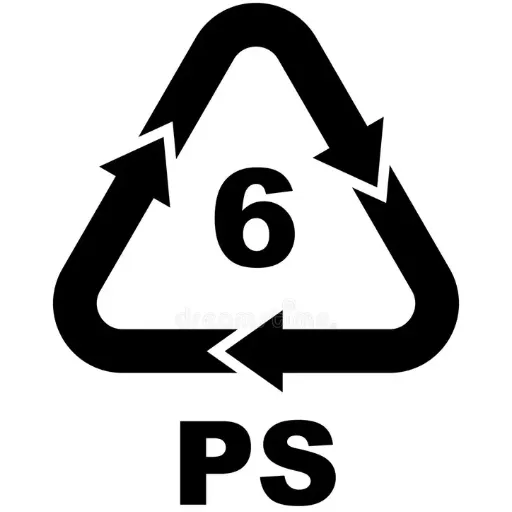Acrylic and PMMA are two materials very well-known all over the world; they are commonly used in the construction and design industries. Two terms, however, can create confusion: Are they the same material, or are there differences? This article will clear up the confusion. Regardless of whether you are a professional dealing with the materials or just a curious mind trying to understand their uses in the modern world, you will find answers here. Read on to learn about the science, the applications, and the facts and fallacies about acrylic and PMMA!
What is PMMA, and how is it Related to Acrylic?
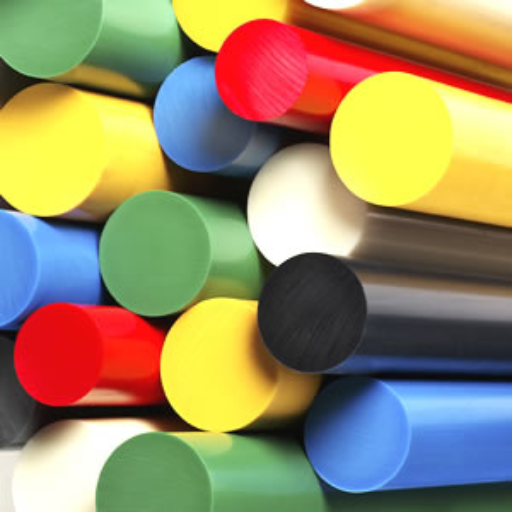
PMMA or Poly (methacrylate) is a widely utilized glass substitute or plastic with trade names such as plexiglass or glass. Polymethyl methacrylate, of glass substitute, is a synthetic polymer obtained from methyl methacrylate. PMMA and acrylic are practically identical materials, as the former is the modern name and acronym, while implashes say acrylic is. They both share the same characteristics and are used in applications such as window display cases and advertisement boards due to their sharpness, power, and weather durability.
What is Polymethyl Methacrylate (PMMA)?
Polymethyl Methacrylate (PMMA) is a thermoplastic polymer with exceptional optical clarity and light transmittance of 92%. PMMA is one of the clearest plastics commercially available. Its density and molecular weight give it higher durability, along with impact resistance approximately 10 times that of ordinary glass. PMMA also has superior UV light and weathering resistance, making it suitable for outdoor applications since it does not yellow or degrade over time. Additionally, PMMA is much lighter than glass, which makes it a preferred material for construction, automotive, and aviation fields.
Applications of PMMA
Most businesses consider PMMA to be very flexible. It replaces glass in lower aircraft windows and automobile lights, places where lightweight and higher resistance to shattering are a priority. PMMA is often referred to as medical grade. This is due to a large number of intraocular lenses used in cataract surgeries alongside surgical implants. As is the case with all other modern building materials, PMMA is used in decorative partitions, skylights, and other applications that require modern aesthetics alongside flexibility in design. Most importantly PMMA is easy to form by cutting or polishing, which means that it can meet numerous standards.
Sustainability and Innovations in PMMA
The pursuit of recycling methods for PMMA has made it possible to improve its production sustainability. The reduction of environmental/economic burden is achieved through the use of reclaimed PMMA in manufacturing. Changes in the production techniques of PMMA also improved its energy efficiency, thus enabling the industry to attain additional environmental standards. The recyclability of PMMA materials as well as their durability makes them environmentally friendly alternatives in the materials industry.
Is Acrylic the Same as PMMA?
An acrylic shell and a PMMA shell are often confused as Acrylic is marketed as PMMA but in most context, an abbreviation is what is referred to. PMMA is a scientific name for a synthetic polymer widely known in the commercial sphere as Acrylic. This type of chemical is known for being extremely transparent, shatter resistive, and lightweight.
PMMA’s clarity is astounding, with light emissions of about 92%, being on par with glass and superior to several types of plastics. Its resistance to UV light and weather makes it seem like an exceptional choice for outdoor signage and skylights. Not to forget, PMP has a lightweight, which is half the density of glass. This makes it a hassle-free installation that comes with lower transport expenses. gives installers
PMMA is more understood as a resistant polymer that was specially formulated to withstand damage. It possesses lightweight properties, condensate with and half the density of glass. Apart from these advantages, PMMA can also be manufactured in varieties such as injection, extrusion molded, or automotive component medic devices, amking the polymer extremely adaptable.
In simple terms, from an industry PMMA is the terminologysidered strong and durable acrylic shell, either an in use option or a reserved one. With a range of raw material applications, PMMA proves why you would want to choose a polymer in the first place.
How is Methyl Methacrylate Used to Create PMMA?
As a result of the most important methyl methacrylate (MMA) monomer, polymethyl methacrylate (PMMA) is produced. During the course of this process, a polymerization reaction is performed where PMMA polymer is formed as a result of chemically linking MMA monomers in long chains. This reaction can be performed in two the most popular ways: bulk polymerization and suspension polymerization, both designed for certain production needs.
The addition of initiators to MMA monomer and polymerization of it under pressure and temperature control to form PMMA is referred to as bulk polymerization. The PMMA produced has high optical clarity. This process is especially good for making lucid sheets and lenses. In suspension polymerization, MMA is dispersed in water and transformed into homogeneous droplets utilizing stabilizers, and these droplets are used to form fine PMMA beads that are later melted and molded into different things.
Advancements in polymerization processes have enabled the selective control of the molecular weight and attributes of PMMA (‘Polymethyl methacrylate’) to the manufacturer’s requirements. For example, impact-resistant grades are obtained through the addition of certain copolymers or by blending PMMA with modifiers. With efficient methods of transforming MMA to PMMA, there is considerable demand in the automobile, medical devices, consumer electronics, and sign-making industries, among others, reflecting a global demand for PMMA at the billions of dollars mark. Such advances continue to improve the methods of producing this polymer, making PMMA one of the most adaptable and durable materials in contemporary society.
Exploring the Properties of PMMA and Acrylic
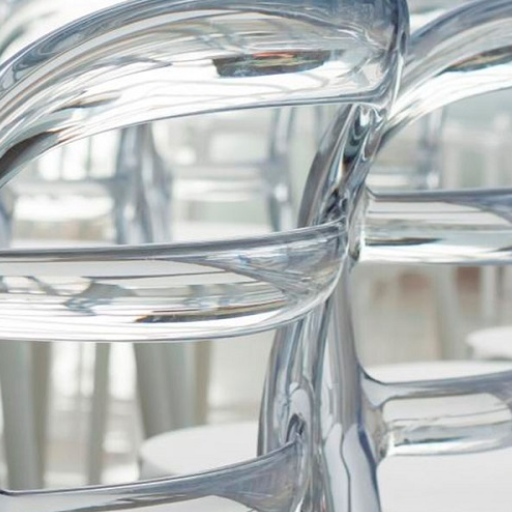
PMMA, or Polymethyl Methacrylate, also known as acrylic, is a highly transparent and low-weight material with great optical clarity. It is perfect withstanding outdoor weather since it has a lot of resistance to UV light, and PMMA is also easily scratchable while maintaining its shape, which allows it to have great versatility in different industries. Although it is not as durable as other types of plastics, acrylic remains very useful due to its transparency, low weight, and resistance to aging, making it ideal for use in windows, display lenses, and screens.
What are the Optical Properties of PMMA?
Polymethyl methacrylate (PMMA) is one of the most widely used polymers based on its diverse commercial applications. The properties that make this materialsof special interest are its low refractive index, high transmittance, light weight, and above all, it gies in a flawless visual clarity even if it is transmittes through thicker sheets.
PMMA has one of the most accurate light transmittance accuracy, roughly about 87% which is significantly higher than glass. Its striking refractive index fluctuates between 1.49 and 1.50. As mentioned above, the polymethyl methacrylate effectively absorbs LED light but also filters harmful rays PMMA enables it optical properties is UV transparent without lowing clarity.
PMMAs retained performance, relabiilty and enhanced durability makes it for protective barriers, outdoor advertisement, lenses, and signages which succums preventative and damagingUV rays. Its greater density, strength, alongside clarity has led to its purposed usage in automotive and window construction, design electronics devices, and servers.
How Does PMMA Compare to Polycarbonate?
Polymethyl Methacrylate (PMMA) and polycarbonate are two prominent examples of transparent plastics. Each serves its designated purpose, and PMMA serves best in terms of appealing features. PMMA can carry up to 92% of visible light, offering Optical clarity, which makes it excel in visibility for applications such as scdrain covers and aquariums. Conversely, while having lower clarity, Polycarbonate can still reach 90% of visible light. The major upside of polycarbonate is its impact resistance, coming in at 250 times stronger than glass and 30 times stronger than PMMA. Because of that, it’s commonly used in safety goggles, helmets, and bullet-resistant shields.
Apart from the merits, there are still other attributes to look out for. PMMA is known to be a better choice over polycarbonate in terms of value. This attribute is noticeable when talking about businesses with financial constraints. Also, PMMA weighs less, making transportation easier. Withstanding higher levels of thermal resistance, polycarbonate sits on top with 135° compared to PMMA’s 90-100°. However, the latter does lead to scratch resistance. Polycarbonate can still be treated to help shield the coating from scratches.
Both materials have their individual advantages but it comes down to which attribute is preferred. Be it the environments, level of transparency, weight or durability, a balance is set depending on the surface you choose.
How Durable is Acrylic Plastic?
Acrylic plastic is both strong and impact resistant. Though it is weaker than polycarbonate, it does outperform it in scratch-resistance as well as clarity retention. Because of its durability, acrylic is ideal for projects that require clear vision and long-lasting performance.
Common Applications and Uses of PMMA and Acrylic

PMMA and acrylic are important materials made from polymers in thermoplastics. Their all-purpose usefulness as well as transparency makes them very popular. Some of their applications are:
- Construction and Architecture: Ideal for windows, skylights, and as protective barriers.
- Automotive: Applied on headlight lenses, windshields, as well as interior panels.
- Signage and Displays: Advertising displays can also use these materials – point of sale displays and even exhibition stands.
- Consumer Goods: These materials can be easily used on furniture, as well as aquariums and picture frames.
- Medical Devices: Widely accepted for use on dental devices, prosthetics, and even used as protective shields.
Because of PMMA and acrylic’s combination of lightweight, clarity, and strength traits, they are preferred in the business.
Why is PMMA Often Used in Medical and Dental Fields?
PMMA, which stands for polymethyl methacrylate, is widely used in the medical and dental industry due to its biocompatibility, durability, and high clarity. It is used in dentures, dental restorations, and even in advanced prosthetic limbs. In addition, PMMA is used for manufacturing intraocular lenses for cataract surgery. PMMA is lightweight, which makes it easy for patients, and its strength ensures that it will be reliable for the long term. Its thermal stability as well as UV light resistance allows it to be used in medical equipment that undergoes sterilization or requires prolonged periods of light exposure.
Recent studies further support that PMMA has a low allergy risk, making it a safer candidate for direct contact with human tissues. Research shows that PMMA-based intraocular lenses greatly improve vision post-cataract surgery, ensuring enhanced patient satisfaction along with their adaptability, which allows dental professionals to make precise molds for crowns, bridges, and veneers. These features are why PMMA is one of the most important materials in the medical and dental fields.
How is Acrylic Utilized as a Shatter-Resistant Alternative to Glass?
Acrylic, also known as plexiglass, is commercially manufactured as a lightweight and shatter-resistant alternative to traditional glass due to its durability and impact resistance. It can withstand impacts almost 10 times stronger than glass of the same thickness, making it ideal for applications where safety is a top priority. Protective barriers and aquariums are them, as well as skylights and windows for vehicles. Its remarkable lightness, being approximately half the weight of glass, enhances its usefulness in a variety of industries.
Acrylic has even more advantages, such as having very high optical clarity with a light transmission rate of around 92%, making it glass’s peer, if not better. It possesses greater weathering resistance along with UV rays, temperature fluctuations, and aging, ensuring long-term performance in the outdoors. It lends itself to being thermoformed into complex three-dimensional shapes, thus giving a lot of design freedom to architects and manufacturers. Due to these reasons, acrylic is central to numerous industries, including architecture and related fields, adding safety and efficiency so long as aesthetic appeal is never compromised.
What Makes PMMA a Versatile Material?
Even types of glass don’t measure up to the clarity offered by PMMA (Polymethyl Methacrylate), as it allows the transmission of a whopping 92% of light. In comparison with other materials, PMMA is used in sensitive and critical components like windows, aquarium panels, lenses, etc. These components not only require precision but high clarity, which can be provided by PMMA. The aforementioned values and low refractive index of PMMA ensure that cluttered and distorted views are no issue. With all these benefits, PMMA is favored by the optics and design industries.
Impact Resistance and Durability
PMMA is a lightweight alternative to glass but with added benefits. Due to its polymer-based nature, PMMA is highly durable, with 6 to 10 times more resistance to impact as compared to glass. With remote-mentioned criteria, PMMA would be an ideal substitute for glass in demanding conditions like aircraft windows, vehicle windshields, and protective barriers. Shielding from UV rays makes PMMA resistant to yellowing, thereby increasing its service life under sunlight exposure. These properties allow the use of PMMA in outdoor conditions where materials are subjected to harsh weather, giving it a prominent advantage.
Sustainability and Cost-Effectiveness
Like most materials, PMMA is valued for its recyclability. Its cost-effectiveness also plays a role. PMMA can be easily cleaned and maintained, which reduces waste and promotes sustainability. Innovations in PMMA production have led to energy-efficient manufacturing processes, further enhancing its environmental profile. The long life span of PMMA-based products has recently made it a practical investment across various industries.
Applications Across Diverse Industries
Due to its distinct qualities, PMMA is utilized in several industries, including automotive, healthcare, construction, and advertising. Its biocompatibility and ease of sterilization make it ideal for use in medical devices like incubators and sterilizable components. PMMA also aids in creative advertising displays and signage because of its fabrication, customizable colors, and design flexibility. It also has the forming capabilities to create intricate shapes, which ensures that it can support varying demands in different industrial applications.
The effortless combination of transparency, sustainability, and adaptability, provides unlimited scope to the use of PMMA across numerous applications. These features continue to support emerging technologies and broaden the use of the material in contemporary industries.
Manufacturing Techniques for PMMA and Acrylic
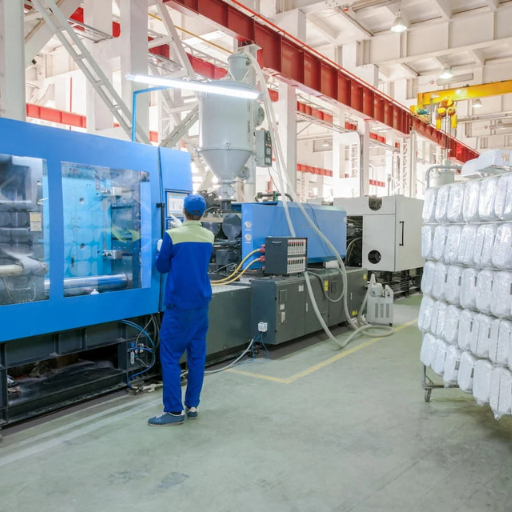
Acrylic and PMMA have differing techniques of manufacture, such as:
- Extrusion: This technique can be utilized on PMMA or acrylic resin. It consists of melting the material and pushing it through a die to obtain specific sheets or any desired shapes. It is prominent in the production of thin, consistent products.
- Casting: A process where high clarity custom shapes can be made by pouring resin into molds. This allows filling thick items with exceptional transparency.
- Injection Molding: A modern approach that facilitates the rapid production of intricate and accurate shapes using high pressure to inject molten material into a designated mold.
- Compression Molding: A specialized technique for certain applications. In this case the object is made by compressing the material in a heated mold.
They choose each method according to the application requirements, such as thickness, shape, or production scale.
What is the Injection Molding Process for PMMA?
The process of injection molding for PMMA (Polymethyl Methacrylate) includes several sequential procedures that guarantee that the parts made have high optical precision and are lasting. As acrylic, PMMA, or Polymethyl Methacrylate, has many applications in the automotive industry, lighting, and electronics due to its unique features like transparency, UV resistance, and scratch resistance.
- Material Preparation: As even trace amounts of moisture can result in streaks or bubbles in the final product, PMMA granules are initially dried for 2 to 4 hours at 80°C to 90°C.
- Heating and Melting: Depending on the specific grade of PMMA used, the dried PMMA granules are fed into the injection molding machine barrel and heated to a temperature between 200°C and 250°C.
- Injection: During this step, molten PMMA is injected into a pre-cooled mold cavity (40°C – 80°C) at high pressure (700 to 1200 bar). Careful control over pressure during this step is critical if accurate replication of intricate features of the mold are to be achieved.
- Cooling and Solidification: The heating of the molten PMMA is cut at this stage. As the PMMA sets, the part is in a fully cooled state and takes its final shape. For parts of a certain thickness, this can take from a tiny fraction of a minute to a few moments.
- Ejection: With sufficient cooling having taken place, the mold is opened, and ejector pins are used. Guarding the surface of the PMMA part against scratches and damage needs to be executed with care, as solidification further emphasizes the need for careful handling while the part is ejected from the cavity.
- Post-Processing: Other processes may be performed on the molded parts, like trimming, polishing, or coating for a better appearance and function. For optical purposes, further polishing may be needed in order to achieve better clarity.
Key Considerations and Data:
- Shrinkage Rate: For PMMA, the shrinkage rate is quite low (approximately 0.4% to 0.8%), thus supporting the preservation of complex geometric features.
- Tensile Strength: PMMA demonstrates good tensile strength, from 50 to 80 MPa depending on the grade.
- Applications: Examples of mass-produced products are lenses, light guides, display screens, and automotive lighting plastic.
- Recyclability: While PMMA is a recyclable material and can be used multiple times, its mechanical properties do take a slight hit post-reprocessing.
For the injection molding process of PMMA, close control of temperature, pressure, and timing is critical in an effort to avoid degrading the material’s advantageous features while also ensuring that results are consistent across different production lots.
How is Extruded Acrylic Made?
The process of manufacturing extruded acrylic involves pushing a mold or die into acrylic resins with heat and pressure and guiding it through a controlled channel. In this method, the starting material is PMMA pellets, which undergo a stage of melting to become a viscous liquid. This liquid is forced through a die to produce sheets, rods, or any geometric shapes that are necessary. A die-casting machine cools and solidifies the material as it leaves the die, which means it can ‘set’ into the desired shape.
The extruded acrylic form is recommended for applications where uniformity is essential like protective screens, lighting instruments, or even signs due to the sculpted pieces having a uniform thickness and uniform appearance. Moreover, extruded acrylic has a lower melting point than cast acrylic which makes creating molds easier. On the flip side, it must be remembered that extruded acrylic has lower optical clarity and strength when measured up against cast acrylic.
Because of its versatility and affordability, the acrylic production market has found that extruded acrylic is more profitable. Commercial data cites that the global production of cast and extruded acrylic sheets surpasses 2 million metric tons every year which reaffirms the fact that it’s in demand across multiple industries. This production process is still a fundamental element of modern techniques in manufacturing that enables high-level customization and flexibility as well as scalability and workflow in bulk applications.
What are Commercial Grades of PMMA?
There are many commercially available grades of PMMA and each is designed for different applications. Some examples are the general-purpose grades with good durability and transparency, impact-modified grades which improve toughness, and UV resistant grades suited for outdoor applications. Furthermore, optical grades of PMMA with heat resistance extend their use in high-performance applications. This makes PMMA applicable in various industries.
Comparing PMMA vs Acrylic: Which is Better?
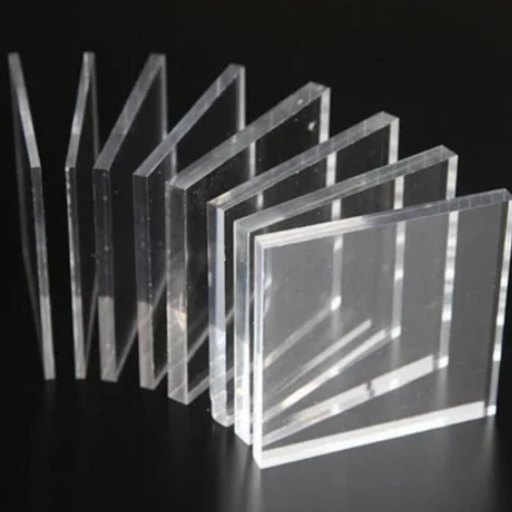
PMMA and acrylic are types of the same material. They differ in name only because acrylic is shorthand for polymethyl methacrylate, which is its technical name. Usually, the difference between them comes down to a particular application. Acrylic is fantastic optically, durable, and weather resistant, which makes it perfect for use in windows, displays, and for signage. PMMA grades can also be modified for added impact resistance or UV shielding, so they can be used indoors or outdoors. In the end, both terms encompass a versatile material, whereby the best choice depends on the desired outcome.
What are the Specific Properties of Each?
Acrylic or PMMA, is well known for its lightweight nature and amazing clarity, transmitting 92% of visible light. Its optical transparency makes it preferable for use in lenses, aquariums and protective shields. Additionally, acrylic has a very good resistance to UV light and weather which makes it highly durable for outdoor applications. Certain modern variations of acrylic can also be improved to enhance impact resistance, with some grades being 17 times stronger than glass while remaining lightweight.
PMMA is also stable chemically, defending against many acids, alkalis, and cleaning solutions. It can be thermoplastic, which means it can be melted and reshaped without losing many properties. This allows for a wide variety in manufacturing. Acrylic does have its downsides, though, as it can be more prone to scratching than alternatives like polycarbonate. This is often mitigated through surface coatings made for abrasion resistance. Acrylic will continue to be used across a wide variety of industries due to these helpful properties.
How Does Impact Resistance Differ Between Them?
In terms of sustaining damage, polycarbonate surpasses acrylic by a large margin. It also has an impact resistance rating of around 250 times that of glass’s and more than ten times stronger than acrylic, earning polycarbonate a reputation for unrivaled resilience, making it a preferred material for bullet resistant windows, safety goggles, industrial machinery, and other protective equipment.
While acrylic is sturdier than standard glass, it is softer than polycarbonate and more prone to cracks from extreme forces. Acrylic lenses can still withstand 10-17 times more force than regular glass, making it ideal for many commercially used items such as display boxes, signage, or showcase fish tanks.
Most people choose between polycarbonate and acrylic based on the purpose of use. These include, but are not limited to, surrounding factors such as weather conditions, how much impact force is likely to happen, and even the budget. In comparison to polycarbonate, acrylic has polycarbonate’s superlative impact resistance while maintaining a lower cost, making it a better investment for durability-intensive projects.
What are the Advantages of Each Material?
Advantages of Acrylic
Acrylic, or PMMA for its formal name, has a variety of applications because of the advantages it offers. It is efficient in its use of space as well because it is much lighter than glass by about fifty percent. The lightness of the material allows for easy transport and handling. A feature well known with acrylic is that it has good transparency while transmitting up to ninety-two percent of visible light, which gives a crystal clear look. Other than that, acrylic is also known for its weather resistance, which offers great outdoor applications as it can withstand exposure to UV light without yellowing over time. It is also easier to cut, mold, and shape compared to other materials, which pose a greater challenge when it comes to designs that require intricate detailing, like display cases, decorative screens, or custom signage.
Advantages of Polycarbonate
Polycarbonate is the premium choice for applications that require exceptional durability due to its resistance to impact and temperature. It is 250 times stronger than glass and significantly shatter-resistant when compared to acrylic. This makes polycarbonate a dependable option for security barriers, protective covers, and places that experience high wear and tear. Its incredible temperature resistance also makes it suitable for industrial and other high-heat environments. Polycarbonate’s capacity to tolerate temperatures up to 240°F (116°C) renders it an excellent choice. Other important benefits include polycarbonate’s flexibility; it can be cold-formed without cracking, which eliminates the need for pre-heating before changing the shape of the material for some projects. In addition, many polycarbonate sheets have a durable hard coat that provides unrivaled scratch and abrasion resistance, enhancing applications such as safety goggles and machine guards.
Reference Sources
- Surgical Therapeutic Decision in Cases of Acrylic Resins Use in Achieving Total Removable Prosthetics1:
- Key Findings: This study focused on the fracture risks of acrylic prostheses and explored reinforcement techniques like glass fiber and metal mesh. It highlighted the importance of proper design and material selection to enhance durability.
- Methodology: Clinical observations were conducted on 17 patients aged 50-85, analyzing fracture risks and evaluating reinforcement methods.
- Comparing the Shear Bond Strength with Acrylic Teeth, Hardness, Surface Roughness, and Cost-Benefit of Three Different Denture Base Materials2:
- Key Findings: Heat-cured acrylic showed superior shear bond strength and cost-effectiveness compared to injectable acrylic and polycarbonate. However, polycarbonate exhibited higher surface roughness and cost.
- Methodology: Ninety specimens were tested for shear bond strength, hardness, and surface roughness, followed by a cost-benefit analysis.
- Comparison of Acrylic and Polymethyl Methacrylate Lenses in a Pediatric Population3:
- Key Findings: Acrylic intraocular lenses (IOLs) demonstrated lower rates of posterior capsular opacification (PCO) and uveal inflammation compared to PMMA lenses, making them more biocompatible and effective in pediatric cataract surgeries.
- Methodology: A prospective study involving 23 children with bilateral cataracts, comparing outcomes of acrylic and PMMA IOLs over an average follow-up of 11.1 months.
- Top PMMA Plastic Pellets Suppliers in China
Frequently Asked Questions (FAQs)
Q: What is PMMA, and how is it related to acrylic?
A: PMMA, or polymethyl methacrylate, is a transparent thermoplastic often used as an alternative to glass. It is a type of acrylic known as acrylic glass. PMMA and acrylic are essentially the same, as PMMA is derived from the polymerization of methyl methacrylate monomers, making it a specific type of acrylic.
Q: Is PMMA considered a type of acrylic?
A: Yes, PMMA is considered a type of acrylic. It is a polymer of methyl methacrylate, which is one of the most common forms of acrylic polymers. PMMA is known for its excellent clarity and is often used in applications where transparency and UV resistance are important.
Q: What are the main uses of PMMA in various industries?
A: PMMA is widely used in industries due to its clear plastic quality and chemical resistance. It is commonly used in the production of acrylic sheets, display signs, skylights, and as an alternative to polycarbonate in windows and lenses. PMMA material is also used in medical applications as it is compatible with human tissue.
Q: How does PMMA compare to other thermoplastics?
A: PMMA is a transparent thermoplastic that offers excellent optical clarity and UV resistance compared to other plastics. While it is not as strong as polycarbonate, PMMA offers better scratch resistance and chemical resistance. It is often chosen for applications where aesthetics and transparency are crucial.
Q: Can PMMA be used for outdoor applications?
A: Yes, PMMA can be used for outdoor applications. It has good UV resistance, which prevents it from yellowing when exposed to sunlight. This makes it suitable for outdoor signs, windows, and other applications requiring durability and weather resistance.
Q: What types of PMMA grades are available?
A: There are several PMMA grades available, including general-purpose, high-impact, and UV-resistant grades. The choice of PMMA grade depends on the specific requirements of the application, such as impact strength, clarity, and resistance to environmental factors.
Q: How are PMMA sheets manufactured?
A: PMMA sheets are typically produced by polymerizing methyl methacrylate monomers and then forming the resulting polymer into sheets through a process that involves pouring liquid PMMA or extruding molten PMMA through a die. This process allows for the creation of high-quality acrylic sheets with consistent thickness and clarity.
Q: What are the benefits of using PMMA over glass?
A: PMMA, also known as acrylic glass, offers several benefits over traditional glass, including being lighter and more impact-resistant. It provides excellent optical clarity and can be easily shaped and molded, making it a versatile choice for many applications. PMMA also offers better chemical resistance compared to glass.
Q: Can PMMA be used in medical applications?
A: Yes, PMMA is used in medical applications due to its compatibility with human tissue. It is often used in the production of bone cement, dental prosthetics, and intraocular lenses. PMMA offers the necessary biocompatibility and clarity required for these applications.

